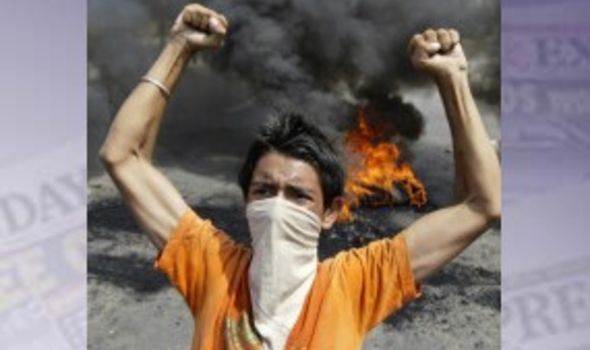By David L. Chaplin II
Impunity Watch Reporter, Asia
KASHMIR, India – “We want freedom” was the resonating chant as protests in Kashmir turned deadly when troops open fired on hundreds of demonstrators on Sunday, killing one person and wounding at least five.
Hundreds of people took to the streets, throwing rocks at security forces and surrounding an armored vehicle belonging to paramilitary soldiers, in a protest against the death of Mohammed Rafiq Bangroo, a 25-year-old who died Saturday after being beaten by troops in an earlier demonstration last week. After the demonstrators tried to light a bunker on fire, the officers fired as an act of self defense, authorities say.
“We exercised maximum restraint. Our soldiers opened fire only in self-defense after the protesters tried to torch the bunker,” Prabhakar Tripathi, spokesman for the Central Reserve Police Force, told the AP. Tensions in the Muslim-majority region have been running high since local police accused the military of killing three civilians in April, and officials now say they are clamping down by enforcing a tight curfew and other restrictions.
Despite a decline in violence in Kashmir in recent years, there are fears that militants are trying to regroup in the region. Hundreds of thousands of Indian troops are based in Kashmir to fight a two decade-old insurgency against Indian rule.
A senior Indian army officer has been killed in a gun battle with separatist militants in Indian-administered Kashmir. Colonel Neeraj Sood was “leading his troops” when he was gunned down by militants in Lolab area, the army said. He was the highest ranking officer to be killed by militants in Kashmir in 2010.
It is not clear whether the militants have suffered any casualties in the clashes.
Many know this re-birth of violence comes at the worst time, Al Jazeera’s Prerna Suri reports from Srinagar, said: “The violence couldn’t have come at a worse time for the people of Kashmir. It’s peak tourist season and families live entirely on tourism. They say if violence spreads, the only ones to suffer will be them.”
The demonstration swelled after the shots were fired, when hundreds more people poured into the streets, chanting “Indian forces leave Kashmir”.
Anti-India sentiment runs deep in Muslim-majority Kashmir. Opposition groups have been fighting since 1989 for the Himalayan region’s independence from India or its merger with neighboring Pakistan.
For more information, please see:
Al Jazeera English – Police on Kashmir protestors – 20 June 2010
BBC news – Indian army officer killed in Kashmir clash – 23 June 2010
The Huffington Post – Kashmir Police Open Fire On Protesters – 21 June 2010



